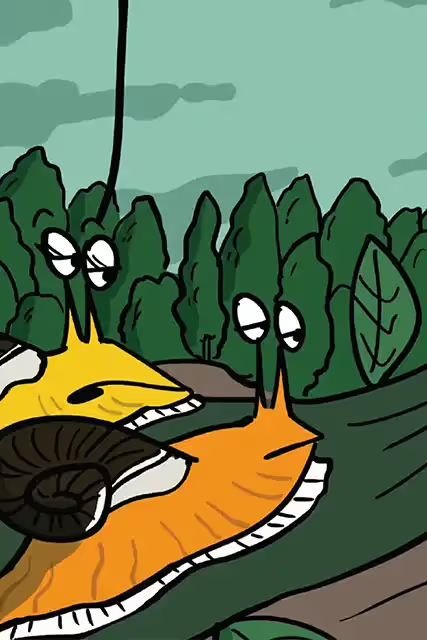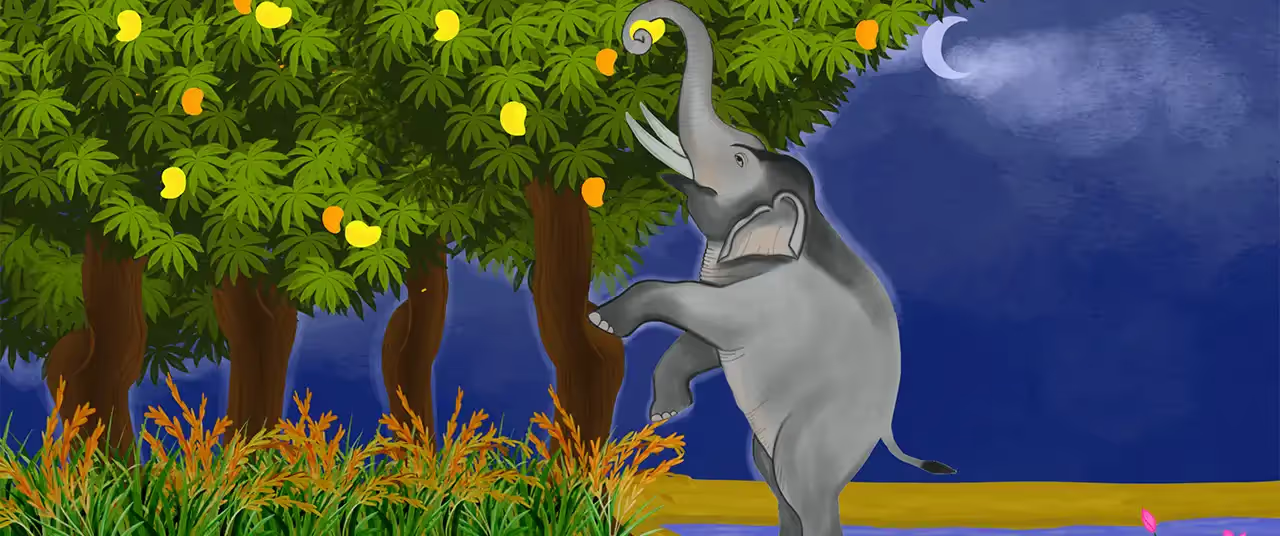Rohan Chakravarty's panels highlight the plight of the planet






A gag is either a joke or something that cuts off your air. Rohan Chakravarty’s comic strips capture both ideas. His humour is sharp, but it highlights the suffocating reality of our planet’s state.
Sea Ice? Now You Don’t is his latest book in the Green Humour collection, featuring comic strips published in The Hindu, Times of India, Roundglass Sustain, and DW News.
From woolly mammoths asking elephants about their "trimmer," to illustrated flight announcements reading, “Expect some turbulence: large-scale habitat destruction, mass hunting, and climate change on our path. Enjoy the flight, and thanks for choosing the East Asian–Australasian Flyway, the world’s most endangered flyway,” his work touches on everything. For first-time readers, the comics promise fun. For the uninitiated, it’s akin to a walk in nature. And for complacent readers, there’s a clear call to action.

Green humour
Green Humour has been around for 14 years, serving as a wellspring of news, research and quaint curiosities about all things green. Chakravarty, from Nagpur, said, “In 2010, while dabbling with my cartoons, I didn’t know which direction to take my work. Nagzira is one of the tiger reserves close to Nagpur. In fact, Nagpur is called the tiger capital of the world because of its proximity to many tiger reserves around. Around this time, I had a tiger sighting that gave me the idea of volunteering for Kids for Tigers, an organisation that takes school kids on nature trails, birdwatching walks etc.” Soon after, Green Humour became a blog, and in 2013, national publications began running the cartoons.
While cartoons are often seen as something just for kids, Chakravarty doesn’t put an age limit on his readers.“Recently, I got feedback from an eighth grader on Sea Ice at a Bangalore literature festival where I spoke. He said he and his peers greatly enjoyed the book because I don't dumb down my voice. Though they had to Google or check things with their parents, they were drawn to the books as I spoke to them as I would to an adult, to a person my age.”
Black humour
Finding humour in grim developments, such as a 73% decline in wildlife populations, hasn't been easy. Beyond moments of self-doubt, Chakravarty says that the impact of his work keeps him motivated. "From feedback like this to making more significant differences, I feel fortunate. For instance, in 2020, when the government decided to scrap the Environmental Impact Assessment (EIA), I drew the then environment minister as a superhero called 'Clearance Man.'"
In the cartoon, wherever he flew, trees were cut down, and corporations were thrilled. The strip became the online face of the movement against the draft EIA and helped gather six lakh signatures, putting the government on the back foot.
“I’ve realised this small humble art form, combined with bigger forces like social media or people’s movements, has the potential to create a tangible impact,” said Chakravarty, who won the WWF International President’s Award in 2017.

Indian reality is rife with paradoxical stances on ecological conservation. Chakravarty said the sheer absurdity of certain environmental initiatives makes him feel as if material for his work is being served to him on a platter.
“I think Project Cheetah was like a cartoon strip from the word go, and even experts were aware of it. Yet, it was executed with such pomp and show. We all know that today, most of the cheetahs have unfortunately perished, and the ones that remain still languish in captivity. Many similar decisions are being made across the country, and to me, they are perfect subjects for cartoons.”
But to the country, they represent ecological disasters, like the current plan to turn Great Nicobar into a Hong Kong or a Singapore, regardless of its strong indigenous tribal population.
I’ve realised this small humble art form, combined with bigger forces like social media or people’s movements, has the potential to create a tangible impact.
“They say that in the next four or five years, Nicobar will experience compensatory afforestation in Haryana. That is a cartoon punchline, but unfortunately, the government doesn’t see it that way,” he said.
“Is the country willing to pay the price for such an approach? That's the big question. Similarly, in the Northeast, hundreds and hundreds of dams are coming up in seismically fragile zones. And we can only guess where this will lead the country.” Chakravarty, who trained as a dentist, believes this disconnect stems from a gap between governance and science, not just bureaucratic stubbornness. “We don’t have a culture of speaking science to, you know, people in power.”

The process
With his deep commitment to science and research, Chakravarty put in rigorous work to unearth the most fascinating stories. “The process is very random, as are my series. It could involve an animal or bird I’ve encountered casually on a walk or environmental news, which requires a lot of fact-checking, including discussions with experts. For the book Naturalist Ruddy, I had to read dry and tedious scientific papers, but I approached them like a detective, creating mysteries and crimes from them, since my protagonist is a detective mongoose who exposes crimes against nature.”
Chakravarty also went on field visits to collect firsthand references for illustrating posters and maps for Green Humour.

The young cartoonist stressed his approach changes depending on the story. Drawing inspiration from comic legends like Bill Watterson (Calvin and Hobbes) to conservation comic artists like Seppo Leinonen and Rosemary Moco, Chakravarty is always open to experimenting. When asked about his favourite strips from the book, he said: “I am usually very self-critical, but there are a few that always make me chuckle every time. I’ve done an entire series on Arctic Terns, the longest-distance migratory bird in the world, i.e., all the way from the Arctic Circle to Antarctica and back. So, in this particular comic, the bird is giving sustainable travel tips to this generation of Instagram travellers; something I always find relevant.”

Explore other topics
References




.avif)






